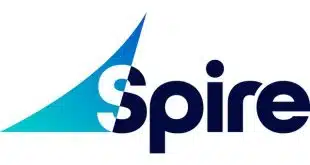The U.S. Supreme Court may have rebuffed merchants seeking to cut debit card transaction costs, but that doesn’t mean they’re entirely out of options.
On Thursday, the Merchant Advisory Group, a Minneapolis-based trade group that counts big-box stores and airlines among its 175 members, released a 16-page white paper using the Federal Reserve’s own data to argue that the banking regulator should dramatically reduce its 3-year-old ceiling on the interchange fee the nation’s biggest banks can receive on debit card payments.
Such a reduction is what merchants have been seeking through the court system since the Fed’s rules implementing the Durbin Amendment went into effect in October 2011. Part of the 2010 Dodd-Frank law, Durbin required a ceiling on debit card interchange and mandated transaction-routing choice for merchants.
In 2013, a federal court agreed with the merchants and ordered the Fed to recast its rules. But the Fed won on appeal, and earlier this week the Supreme Court refused to grant the merchants’ petition for review.
Now, with a barrage of numbers drawn from a Fed survey and bearing on debit issuers’ self-reported costs, the MAG and other merchant groups may hope it can win its case after all in the court of public opinion. “With the Supreme Court appeal pending, we felt it was appropriate to hold off releasing the paper in the short-term,” notes Mark Horwedel, the MAG’s chief executive, in an email message.
The MAG’s paper argues the current cap on debit card interchange should be just under 14 cents per transaction. Instead, the Fed’s cap is 21 cents plus an allowance of 5 basis points for fraud losses. Another penny is allowed if issuers can show they’ve adopted fraud-prevention measures. This results in an effective cap of about 24 cents, a number many observers—including some who are opposed to interchange regulation—argue includes costs not allowed by Durbin and so is higher than that intended by the law.
Yet, since the Fed determined its cap, the average cost of authorizing, clearing, and settling a debit card transaction for financial institutions with $10 billion or more in assets—the issuers regulated by Durbin’s pricing restriction—has plunged from 7.6 cents to 4.4 cents. That’s according to data gathered by the Fed in biennial surveys of banks it has conducted as required by Durbin. The 7.6-cent figure was from 2009 but was used by the Fed in deciding on the cap.
Since the average cost for big issuers has dropped 42%, the MAG’s paper argues, so should the cap, resulting in the roughly 14-cent level. That follows the law’s “reasonable and proportional” requirement, the trade group says. The current interchange ceiling, the group complains, “guarantees covered issuers an average profit of approximately 500% on every debit transaction.”
Indeed, a lot of money is at stake. Debit interchange fees totaled $16.33 billion in 2013, according to the Fed. A 42% reduction would yield savings of up to $6.86 billion, depending on how much acquirers passed on to merchants.
“Absent true market competition, it’s imperative the Fed start looking at whether or not it makes sense for them to re–calibrate their fee-provision rules,” says Horwedel.
But when the Fed last September released the issuer cost data it had gathered in 2013, the banking regulator made it plain it had no intention of revising its price ceiling. In part, this may have been because, while the average cost had dropped, the median issuer had seen an average cost of 14.9 cents, up 35% from the 11 cents found in 2011—an indication that the overall average was heavily skewed by the largest issuers.
Merchant groups allied with the MAG were quick to support its argument for a lower price cap. The Fed’s own survey “shows the Fed needs to change its regulations to reflect reality,” said Lyle Beckwith, senior vice president for government relations at the National Association of Convenience Stores, in a statement issued by the Merchants Payments Coalition, of which the NACS is a member. The Washington, D.C.-based MPC was formed in 2005 to lobby for lower interchange.
Banking lobbyists, though, aren’t impressed with the MAG’s latest gambit. \”Clearly, enough is never enough when it comes to merchants asking for government handouts,\” says Sam Fabens, a spokesperson for the Washington, D.C.-based Electronic Payments Coalition, in an email message. \”Since the Durbin Amendment went into effect, merchants have pocketed over $24 billion without passing the promised savings on to consumers, and there is no evidence that a bigger handout would change that.\”
Even so, Eric Grover, a Minden, Nev.-based payments consultant who opposed Durbin, argues the merchants’ case may ultimately prove persuasive when the Fed next reviews its pricing regulation in 2016. “The merchants are putting in a marker. They want to engage the Fed on its own terms, and put pressure on,” he says. “I’d have to guess that when the Fed reviews this again, a couple pennies will come off [the interchange cap].”




